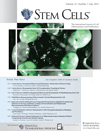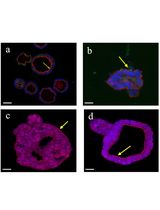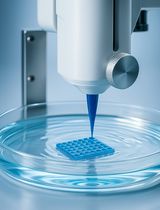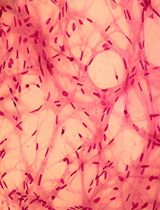- EN - English
- CN - 中文
3D Mammary Colony-Forming Cell Assay
3D 乳腺集落形成细胞培养方法
发布: 2014年04月05日第4卷第7期 DOI: 10.21769/BioProtoc.1087 浏览次数: 17187
评审: Vanesa Olivares-IllanaAnonymous reviewer(s)
Abstract
The mammary epithelium consists of multiple phenotypically and functionally distinct cell populations, which are organized as a hierarchy of stem cells, progenitors and terminally differentiated cells.
Identification of the mechanisms regulating the growth and differentiation of mammary stem and progenitor cells is of great interest not only to better understand the mammary gland development but also to clarify the origins of breast cancer, as these cells seem to be the likely targets of malignant transformation within the mammary epithelium. Hence, a variety of approaches have been developed for quantifying and studying these specific mammary cell subsets.
Given their high proliferative capacity, mammary progenitor cells are able to form colonies in vitro in low-density cultures. Here we describe how to perform a three dimensional (3D) Mammary Colony-Forming Cell (Ma-CFC) Assay, an in vitro functional assay suitable for the detection and analysis of mammary progenitor cells in feeder-free culture conditions.
Briefly, this protocol involves the seeding of mammary single cells, at clonal density, onto a semi-solid matrix (Matrigel), thus allowing mammary progenitors to proliferate and give rise to discrete 3D colonies. The number and the cell composition of the resulting colonies will vary according to the frequency and the differentiation potential of the progenitors, respectively.
Materials and Reagents
- Single-cell suspension of primary mouse mammary cells [see Debnath et al. (2003) for details about the dissociation of mouse mammary glands into single cells]
- EpiCult®-B Basal Medium Mouse (STEMCELL Technologies, catalog number: 05611 )
- EpiCult®-B Proliferation Supplements (STEMCELL Technologies, catalog number: 05612 )
- Trypan blue
- Recombinant human Epidermal Growth Factor (EGF) (Sigma-Aldrich, catalog number: E9644 )
- Recombinant human basic Fibroblast Growth Factor (bFGF) (Life Technologies, catalog number: PHG0023 )
- Heparin sodium salt (Sigma-Aldrich, catalog number: H3149 )
- Fetal Bovine Serum (FBS) (heat-inactivated) (Life Technologies, catalog number: 10270-106 )
- Penicillin-Streptomycin (Pen/Strep) (Life Technologies, catalog number: 15070-063 )
- Growth Factor Reduced (GFR) BD MatrigelTM Matrix [protein concentration > 8 mg/ml, endotoxin levels < 2 Endotoxin Units (EU)/ml] (BD Biosciences, catalog number: 354230 )
Note: BD MatrigelTM Matrix is supplied as a frozen solution. Thaw it on ice overnight and stored as 1 ml aliquots at -20 °C. Leave Matrigel aliquots to thaw on ice for 2 h before use.
- Complete EpiCult-B Medium (see Recipes)
Equipment
- BD Falcon 8-well culture slides (BD Biosciences, catalog number: 354108 )
- Refrigerated centrifuge with swinging bucket rotor
- Humidified 37 °C, 5% CO2 cell culture incubator
- Inverted tissue culture microscope
- Zeiss Observer Z.1 microscope (5x/0.12 objective)
Software
- AxioVision Rel 4.8 software
- ImageJ
Procedure
文章信息
版权信息
© 2014 The Authors; exclusive licensee Bio-protocol LLC.
如何引用
Tornillo, G. and Cabodi, S. (2014). 3D Mammary Colony-Forming Cell Assay. Bio-protocol 4(7): e1087. DOI: 10.21769/BioProtoc.1087.
分类
干细胞 > 成体干细胞 > 维持和分化
细胞生物学 > 细胞分离和培养 > 3D细胞培养
您对这篇实验方法有问题吗?
在此处发布您的问题,我们将邀请本文作者来回答。同时,我们会将您的问题发布到Bio-protocol Exchange,以便寻求社区成员的帮助。
Share
Bluesky
X
Copy link














